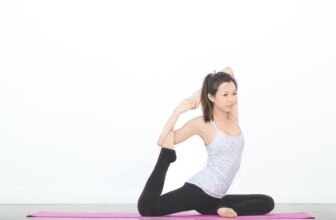Holistic Approaches to Senior Wellness: Nurturing the Mind, Body, and Spirit
As we age, the importance of holistic wellness becomes increasingly evident. A healthy lifestyle for seniors encompasses not just physical well-being but also mental and spiritual fulfillment. This article explores various holistic approaches to senior wellness, incorporating real-life examples, a Q&A section for common inquiries, and an extensive resource table.
1. Understanding Holistic Wellness
Holistic wellness involves a multi-dimensional approach to health that recognizes the interconnectedness of the mind, body, and spirit. According to the World Health Organization (WHO), wellness is more than just the absence of disease. It is a state of complete physical, mental, and social well-being.
1.1 Key Components of Holistic Wellness
- Physical Health: This refers to maintaining a well-functioning body through regular exercise, a balanced diet, and managing chronic conditions.
- Mental Health: Mental well-being involves emotional balance, cognitive function, and simply enjoying life.
- Spiritual Health: This encompasses a sense of purpose, connection to others, and a personal belief system.
2. Physical Wellness
Physical wellness is fundamental to senior health. Regular physical activities tailored to seniors can improve mobility, strength, and overall quality of life.
2.1 Exercise and Fitness Programs
Engagement in regular physical activities is vital for seniors. Programs like water aerobics, yoga, or tai chi encourage movement without excessive strain.
Case Study: The Power of Water Aerobics
Jane, an 82-year-old living in a retirement community, joined a water aerobics class. Over six months, she reported increased leg strength and reduced joint pain. Her energy levels improved, allowing her to engage more actively with her community.
2.2 Nutrition
A well-balanced diet should include fruits, vegetables, whole grains, lean proteins, and healthy fats. Nutritional needs change as we age, emphasizing the need for adequate calcium and vitamins D and B12.
Real-Life Example: A Nutritional Revamp
Consider Tom, a 75-year-old who consulted a nutritionist to improve his diet. After introducing more leafy greens and cutting back on processed foods, he lost weight, lowered his cholesterol, and reported feeling more energetic.
3. Mental Wellness
Mental wellness includes cognitive function as well as emotional balance. Activities that challenge the brain and bolster social connections are crucial.
3.1 Brain Exercises
Puzzles, reading, or learning a new language are excellent ways to keep the mind active. Social interaction is equally important, as it combats loneliness.
Case Study: Engaging the Mind
Susan, aged 78, began attending a local book club. Not only did her cognitive skills sharpen, but her social life flourished, leading to improved mental health and happiness.
3.2 Mindfulness and Meditation
Mindfulness practices can reduce symptoms of anxiety and depression. Regular meditation provides a sense of calm and clarity for seniors.
Example: The Mindfulness Group
A community center offered a mindfulness class that attracted older adults. Participants reported reduced feelings of stress and greater emotional resilience.
4. Spiritual Wellness
Spiritual wellness may encompass religion, philosophy, or personal beliefs. For many seniors, finding meaning and purpose can be a pivotal aspect of their lives.
4.1 The Role of Faith and Community
Participating in spiritual activities, such as attending services or volunteer work, fosters a sense of belonging and purpose.
Real-Life Example: Spiritual Fulfillment Through Volunteering
George, a widower, started volunteering at a local soup kitchen after retiring. This renewed sense of purpose improved his outlook on life and helped him form new friendships.
4.2 Exploring Personal Beliefs
Reflecting on one’s own beliefs can lead to greater self-understanding and peace.
5. Integrative Health Practices
Integrative health incorporates both conventional and alternative medical practices. This approach can enhance the senior wellness experience.
5.1 Complementary Therapies
Therapies such as acupuncture, massage, and aromatherapy can complement traditional treatments. These methods often help alleviate pain and reduce stress.
Case Study: Acupuncture for Chronic Pain
Linda, 70, suffering from arthritis, tried acupuncture along with her prescribed medication. She reported significant pain relief, enabling her to return to gardening.
5.2 Herbal Remedies
Natural herbs can play a beneficial role in managing health conditions, but they should be used cautiously and under professional guidance.
6. Creating a Holistic Wellness Plan
To enhance overall wellness, seniors should actively create a personalized wellness plan that incorporates physical, mental, and spiritual elements.
6.1 Setting Goals
Identifying specific, measurable goals—like walking 30 minutes a day or attending a weekly yoga class—can help guide your wellness journey.
6.2 Regular Health Check-Ups
Routine check-ups with healthcare professionals ensure that seniors understand and manage their health proactively.
7. Challenges and Barriers
While the benefits of a holistic approach to wellness are clear, barriers exist that prevent some seniors from accessing these approaches.
7.1 Accessing Resources
Transportation limitations, physical health issues, or financial constraints can hinder access to wellness programs.
7.2 Overcoming Mental Hurdles
Fear of change or not knowing where to start can leave some seniors feeling overwhelmed.
8. Frequently Asked Questions (FAQ)
8.1 What are holistic wellness practices?
Holistic wellness practices include various activities designed to maintain or improve overall health by taking into account the mind, body, and spirit.
8.2 How can seniors start a physical wellness routine?
Seniors can start with low-impact exercises like swimming, walking, or yoga, and gradually incorporate more activities as their fitness increases.
8.3 Are there specific diets recommended for seniors?
A well-balanced diet rich in fruits, vegetables, whole grains, and lean proteins is recommended, with specific attention to calcium and vitamin D intake.
8.4 What role does social interaction play in senior wellness?
Social interaction can reduce feelings of loneliness, significantly impacting mental health and overall happiness.
9. Resources
| Source | Description | Link |
|---|---|---|
| World Health Organization | Comprehensive information on aging and health. | WHO Aging |
| The Center for Mindfulness | Resources on mindfulness practices. | Center for Mindfulness |
| NIH Senior Health | A government site with health information for seniors. | NIH Senior Health |
| AARP | Resources and articles on aging, wellness, and lifestyle. | AARP |
Conclusion
In conclusion, adopting a holistic approach to senior wellness can lead to improved physical health, stronger mental clarity, and enriched spiritual well-being. By recognizing the interconnectedness of these aspects, seniors can create a life that is not only longer but also more fulfilling. As we look to the future, there is a growing emphasis on integrative health practices. Research into natural and alternative therapies is expanding, promising exciting new avenues for enhancing senior health.
Disclaimer
This article is intended for informational purposes only and should not be taken as medical advice. Always consult a healthcare professional before implementing any changes to your health regimen.










